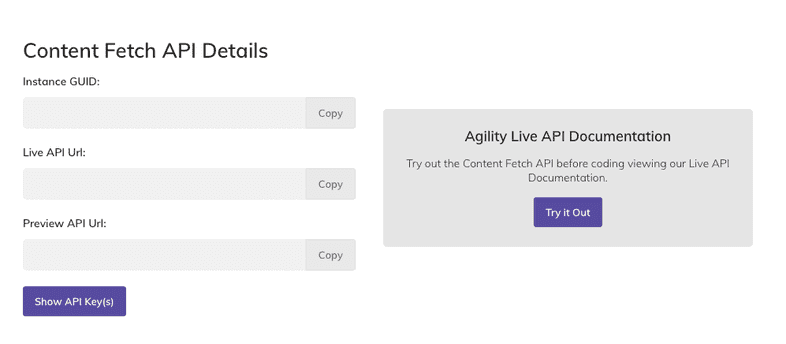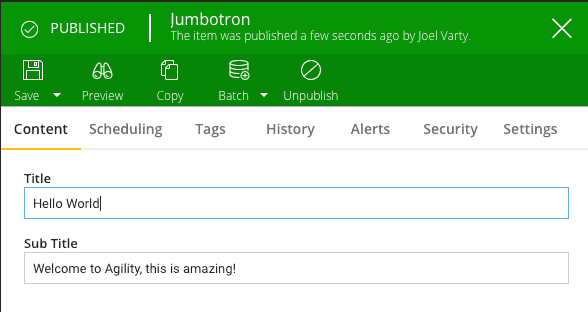Sourcing from Agility CMS
This guide takes you through the steps involved in setting up a Gatsby site that fetches content from Agility CMS.
Check our docs for up-to-date documentation.
What is Agility CMS? What makes it different?
Agility CMS is a headless Content Management System (CMS) that lets you define your custom content types, relationships and pages. This is called Content Architecture, and you can reuse this content for your websites and apps.
Agility believes that a successful website balances the User Experience (UX), Editor Experience (EX), and Developer Experience (DX).
While Gatsby tends to handle UX and DX quite well, editors are not always comfortable working directly in a codebase. They prefer to manage their sitemap and see what content is on which pages. Using Gatsby with a headless CMS allows for this.
Agility aims to empower and improve the Editor Experience by providing built-in Page Management. This means developers can build UI Components and leave editors to compose their pages.
Learn more about Agility CMS and Gatsby
Getting started
Create a free Agility account
Create an Agility CMS account with the Free Plan (this plan is free forever). Sign up to Agility CMS.
Once your account is created, you’ll need to grab your GUID and API Keys.
Get the code
Make sure you have the Gatsby CLI installed:
Clone the Agility CMS Gatsby Starter repo from GitHub that has all the code you need to get started:
Install the dependencies:
Once you’ve the infrastructure set up, run the site in development mode:
The site is just a starter, but it has a bunch of interesting features that you can use to build from. The next step is to hook this code up to your new Agility CMS instance that you just created.
Hook it up to your Agility CMS instance
Edit the gatsby-config.js file and replace the guid and apiKey with yours.
You can find your API keys on the Getting Started page in the Agility CMS Content Manager.
If you use the preview key, you won’t have to publish to see the changes you’ve made show up. If you use the fetch key, make sure you’ve published any content you wish to see changed.
How it works
The Gatsby Source Plugin will synchronize your sitemap, pages, and content for you and place it into GraphQL.
All of those pages and content are then made available in GraphQL to the React Components you will write to render those pages.
Check out the component called “Jumbotron”. This is an example of how to display a styled heading and sub-heading with content that comes from Agility CMS. Here is the Module that provides this content being edited in the Agility CMS Content Manager:
And here is the code used to render it. Notice that the title and subTitle fields are available as properties of the item.fields object.
When you add new modules and content definitions to Agility CMS, the components used to render those modules will automatically receive the strongly typed data delivered to those modules as props.

